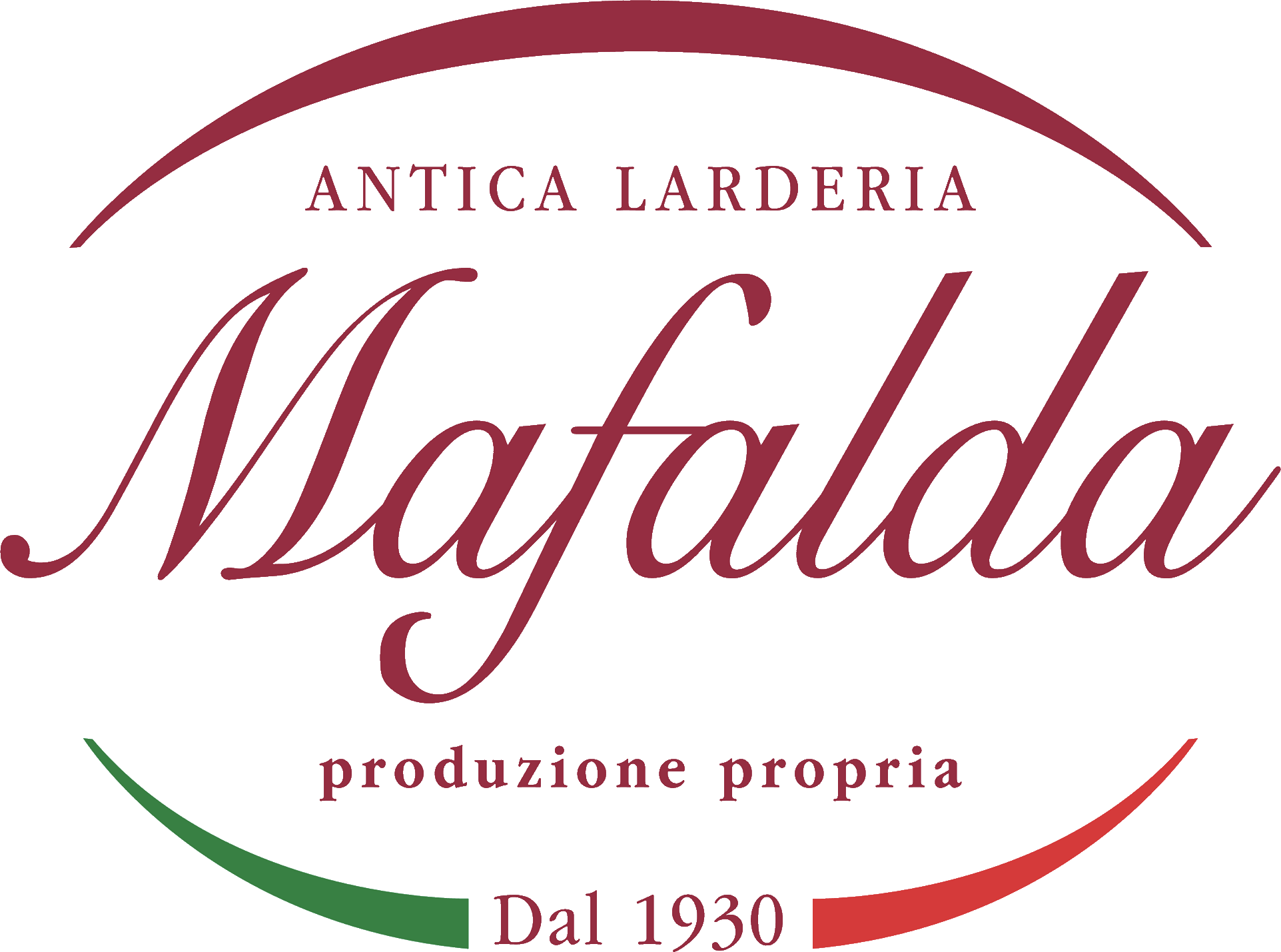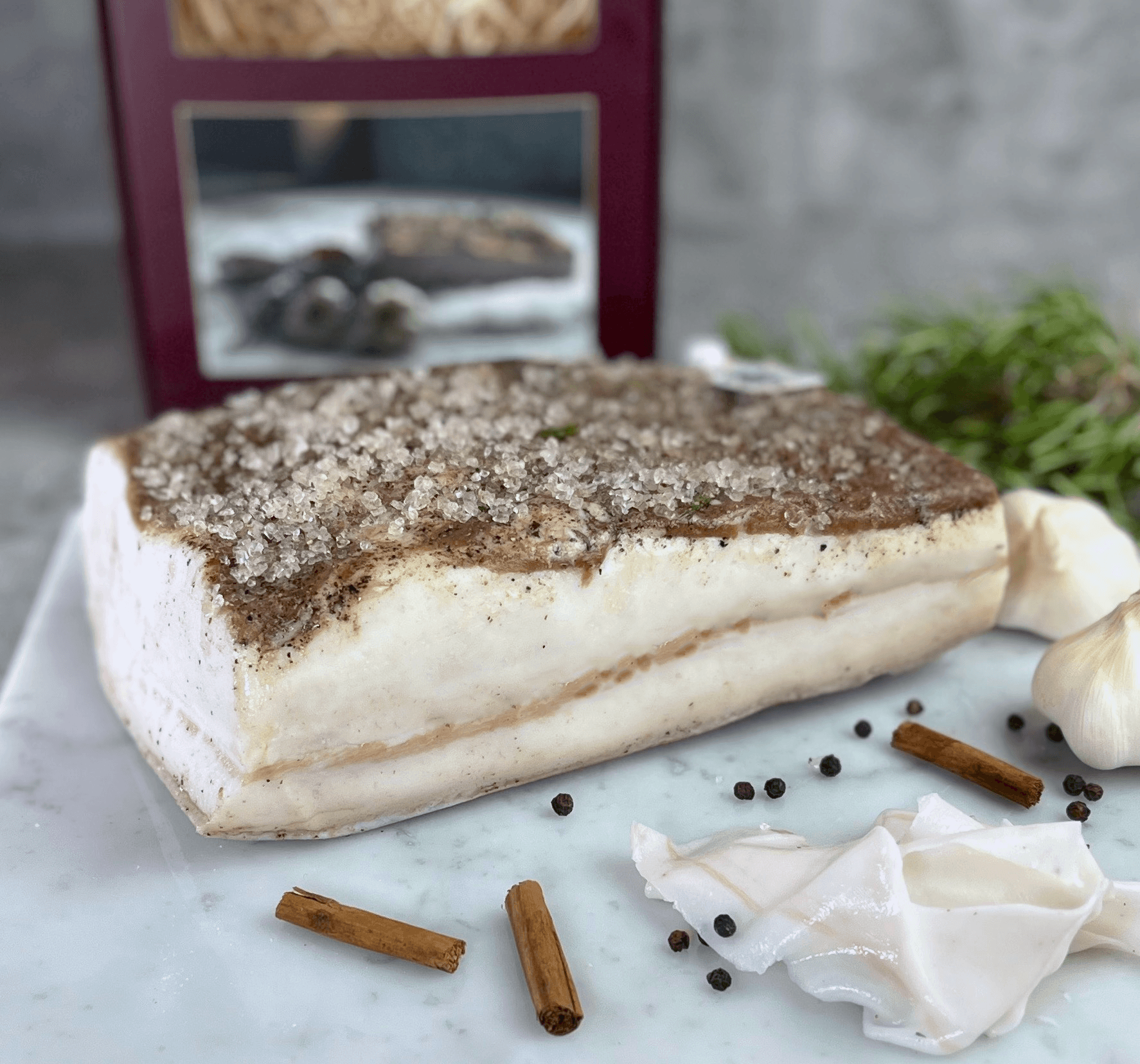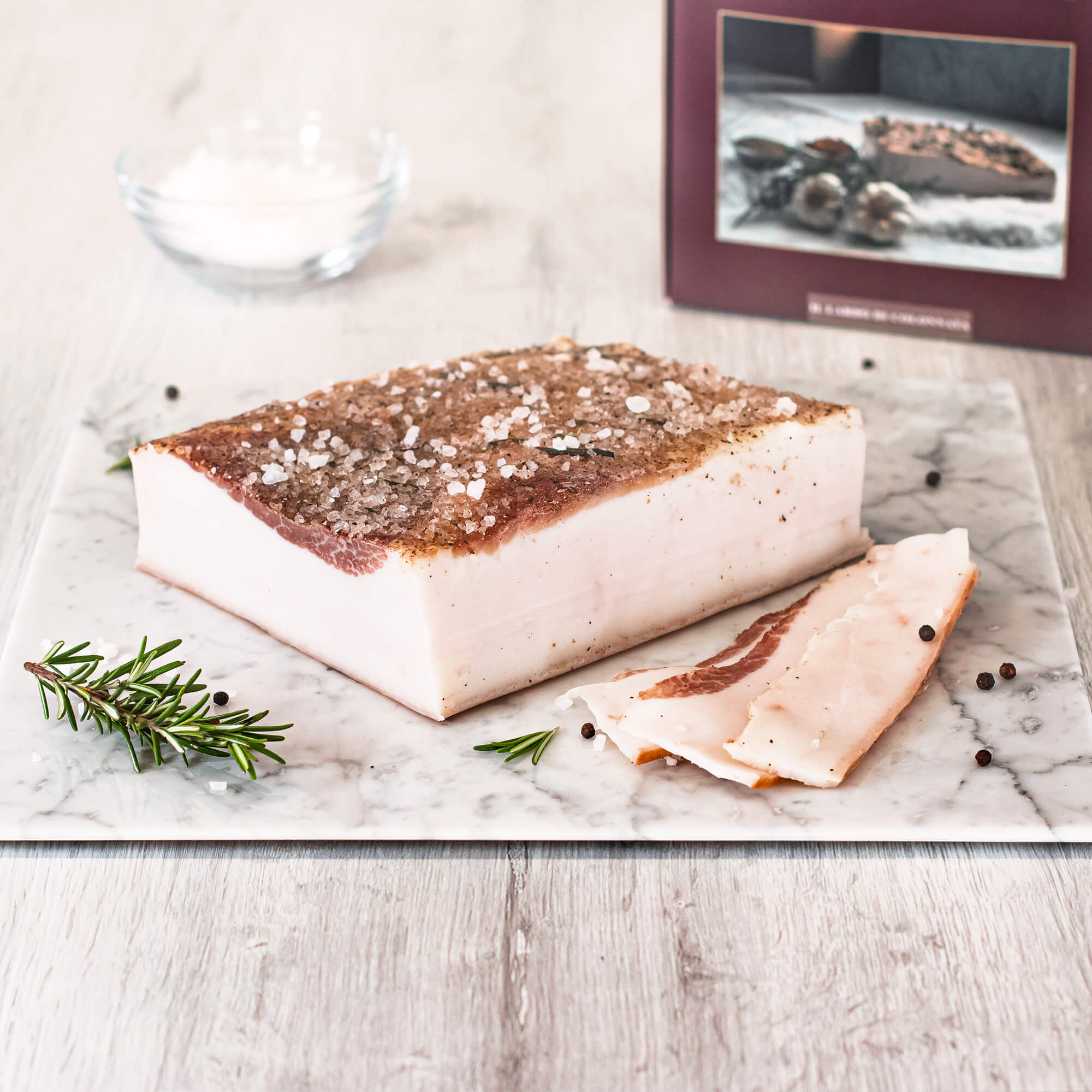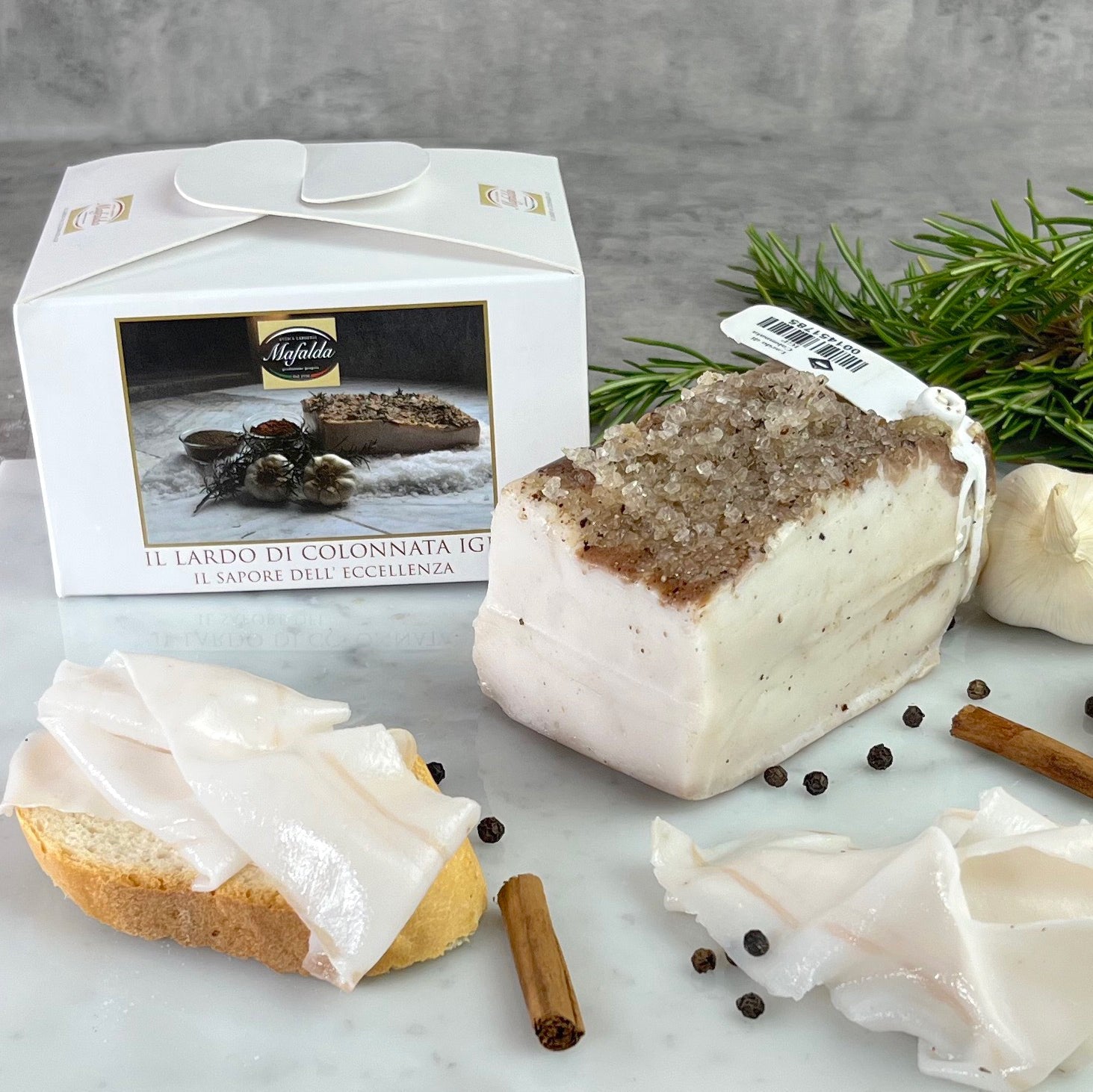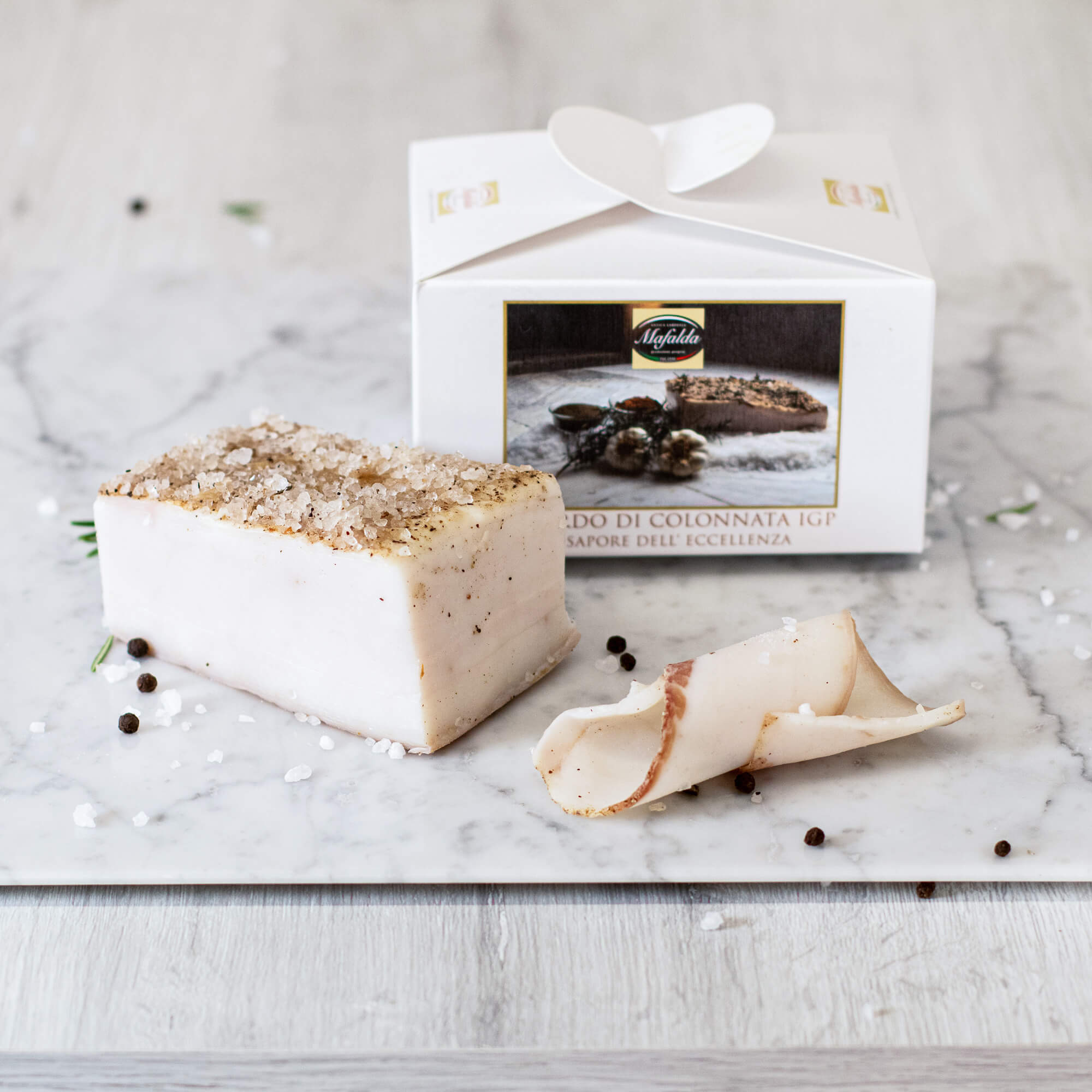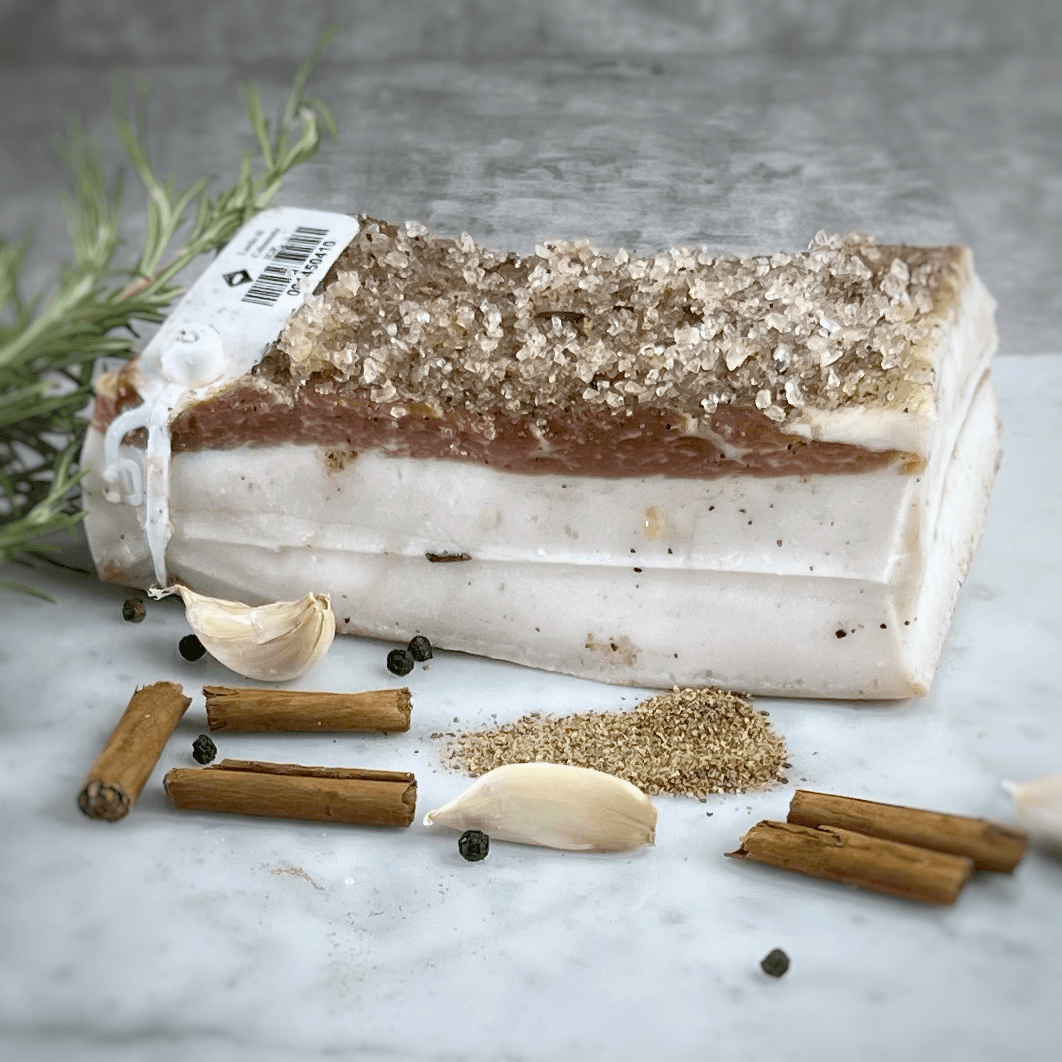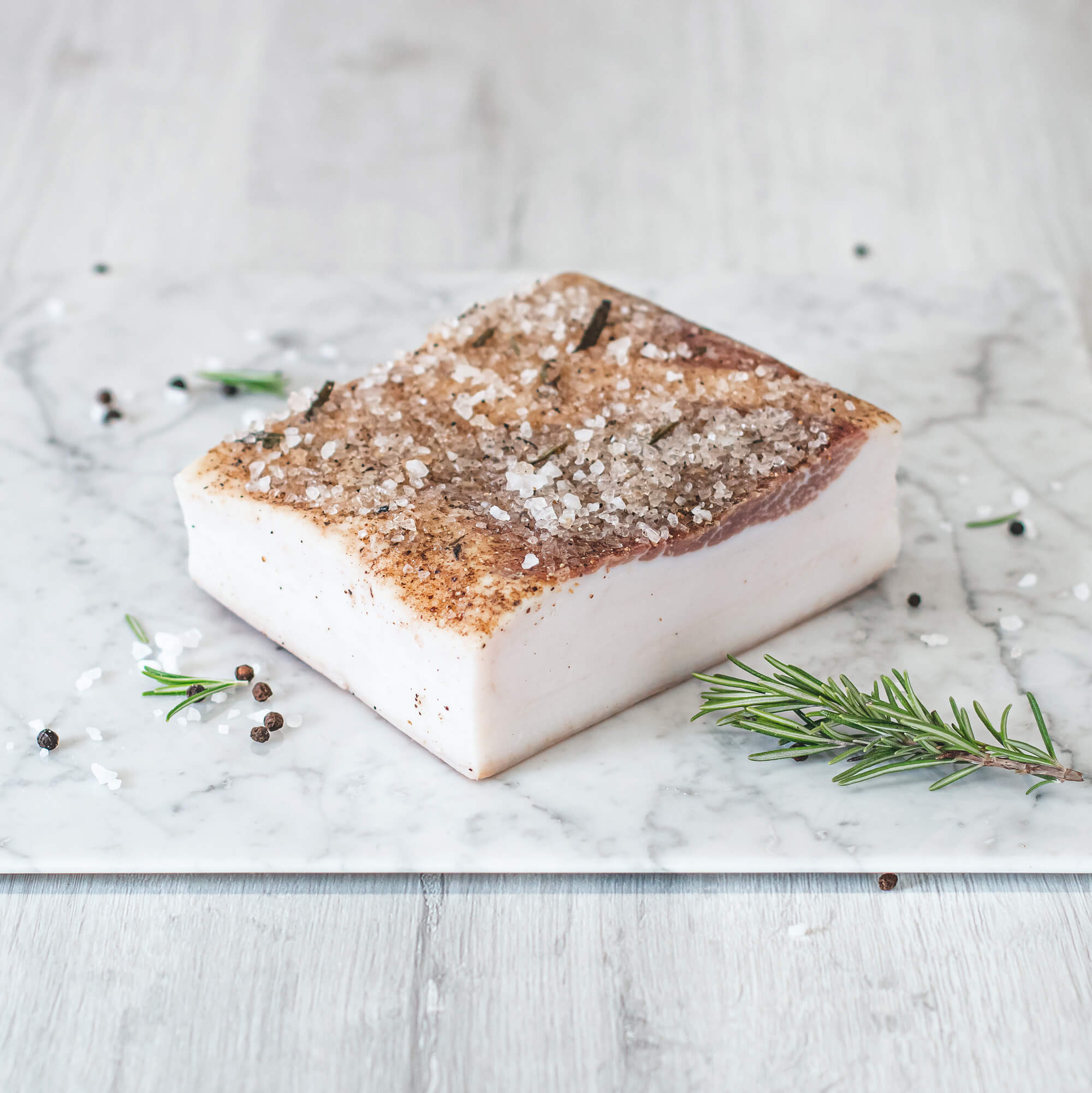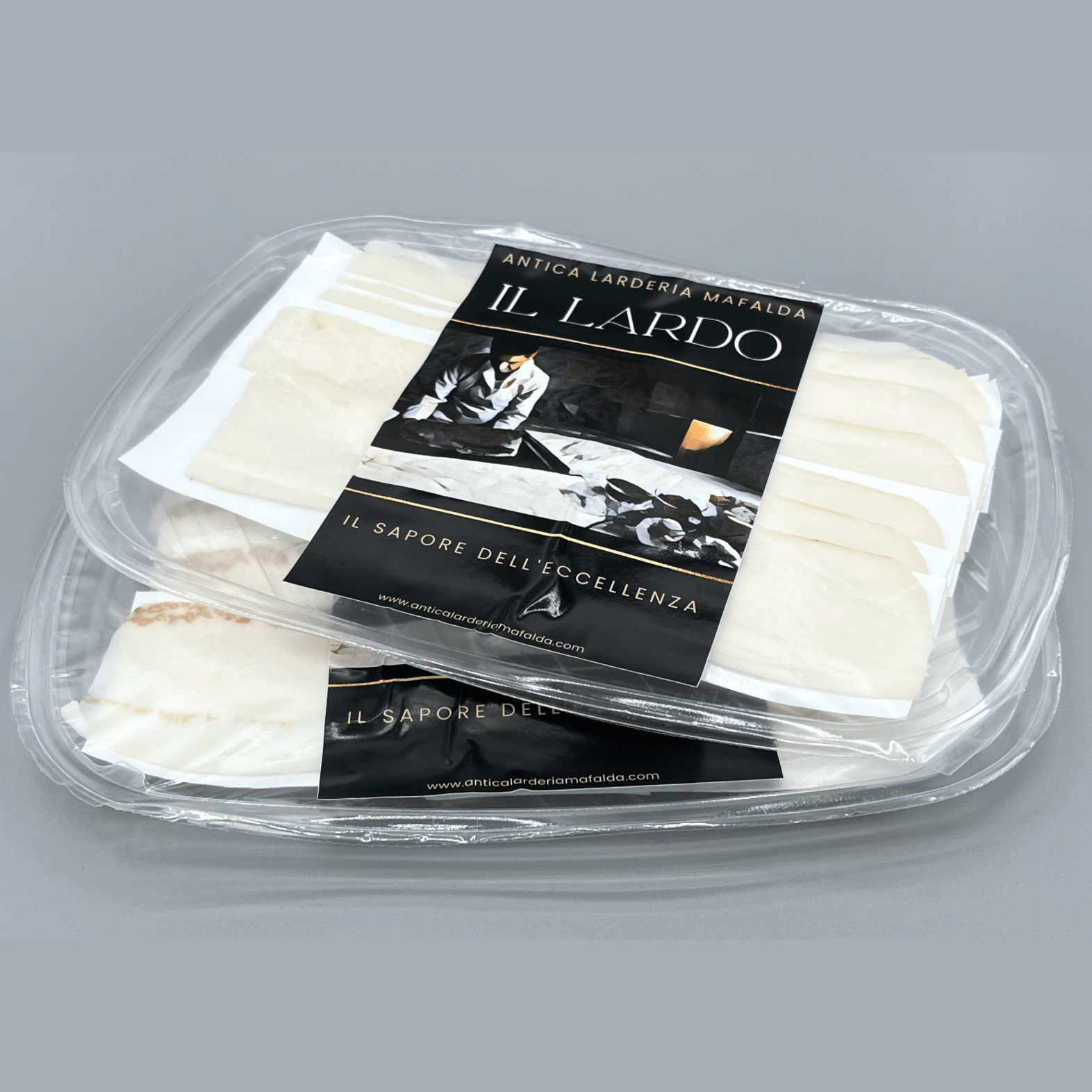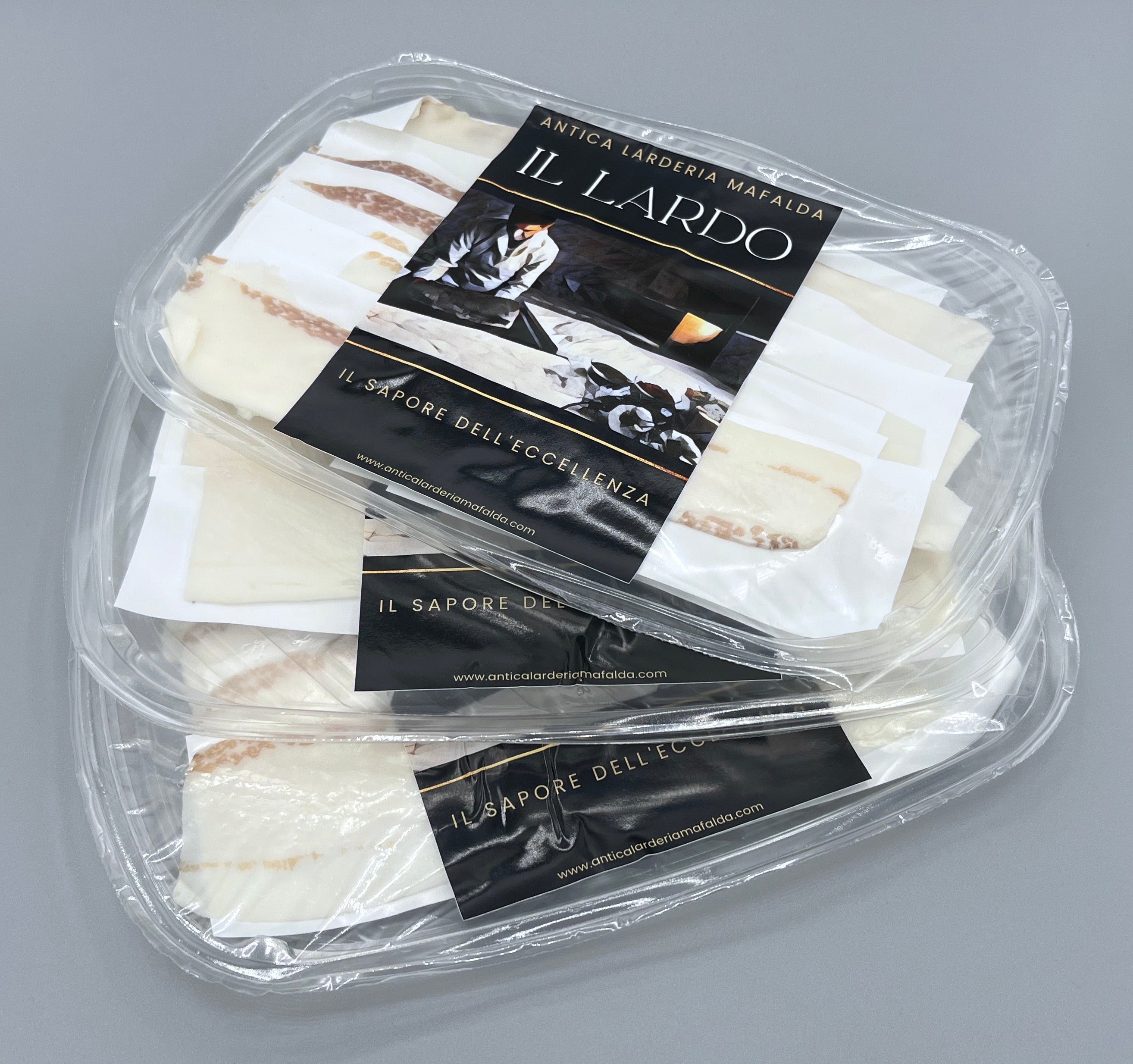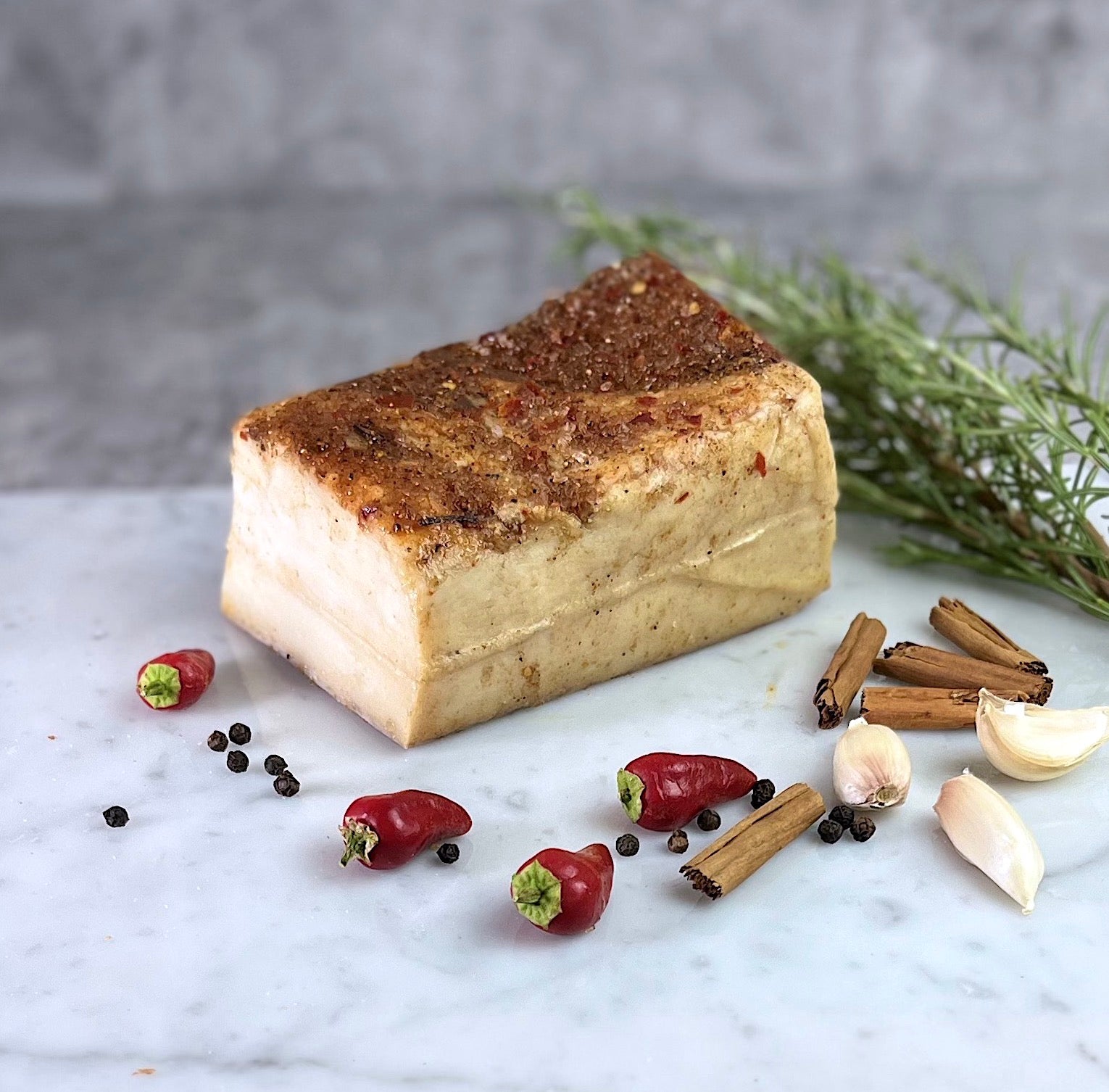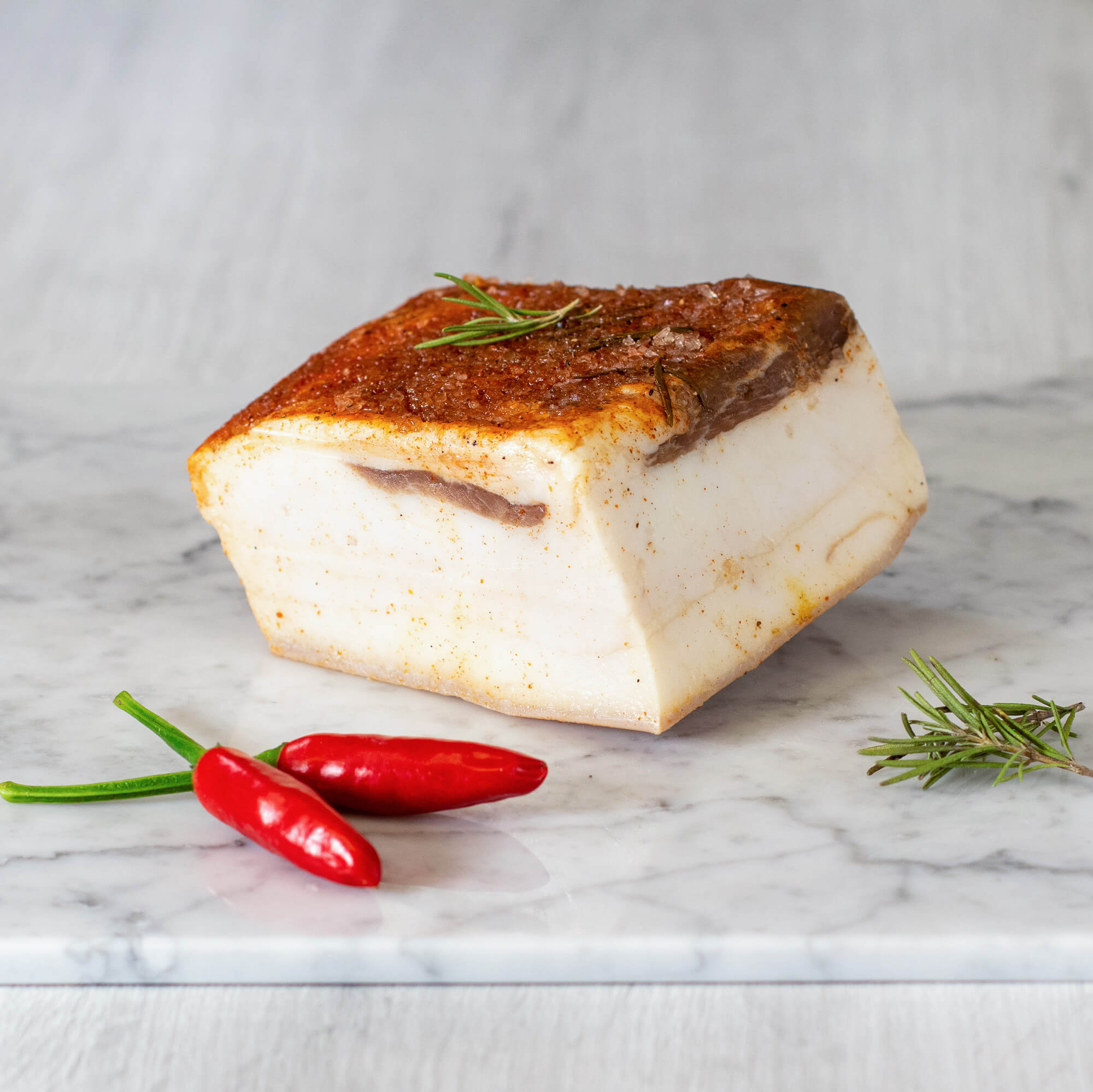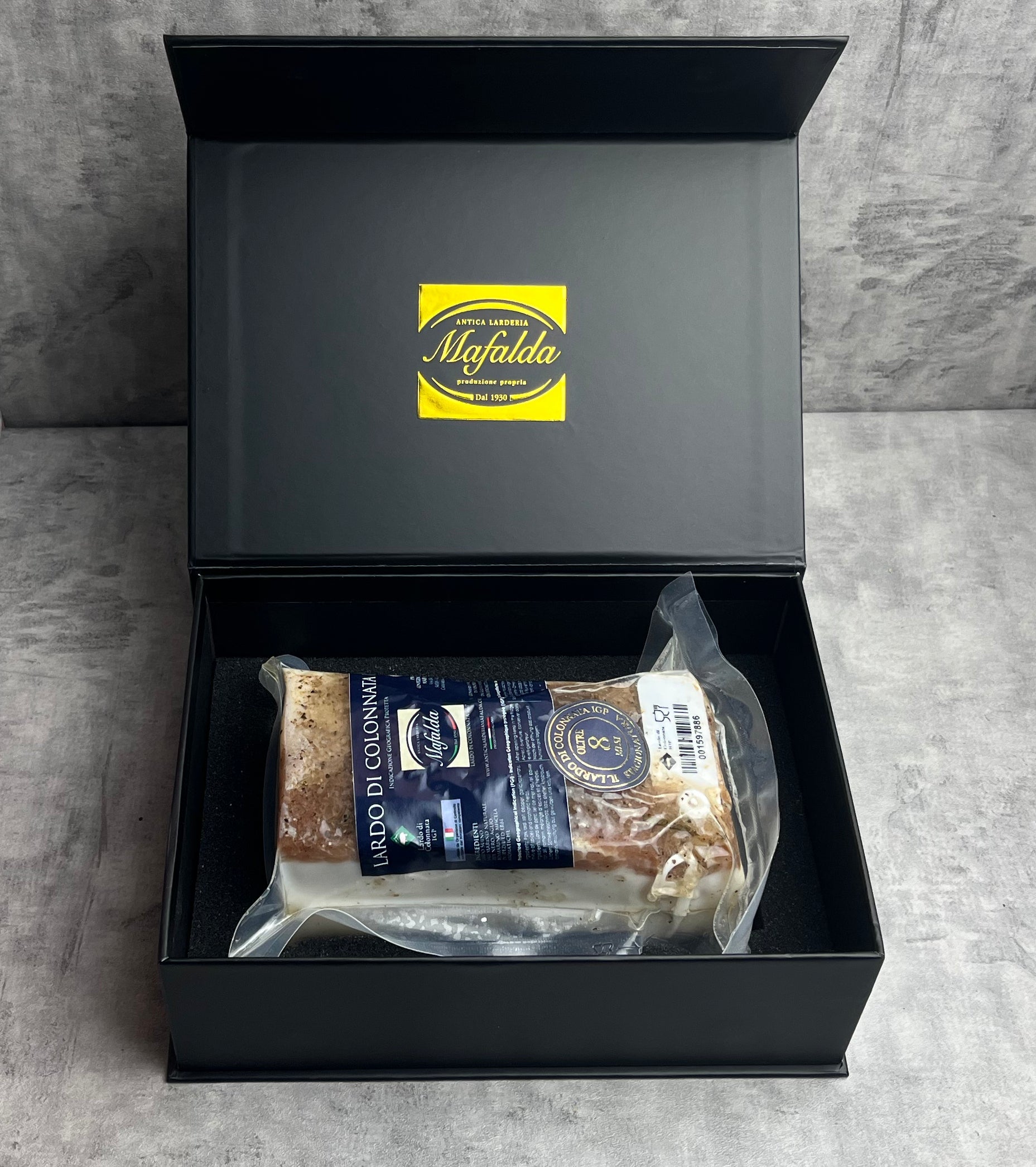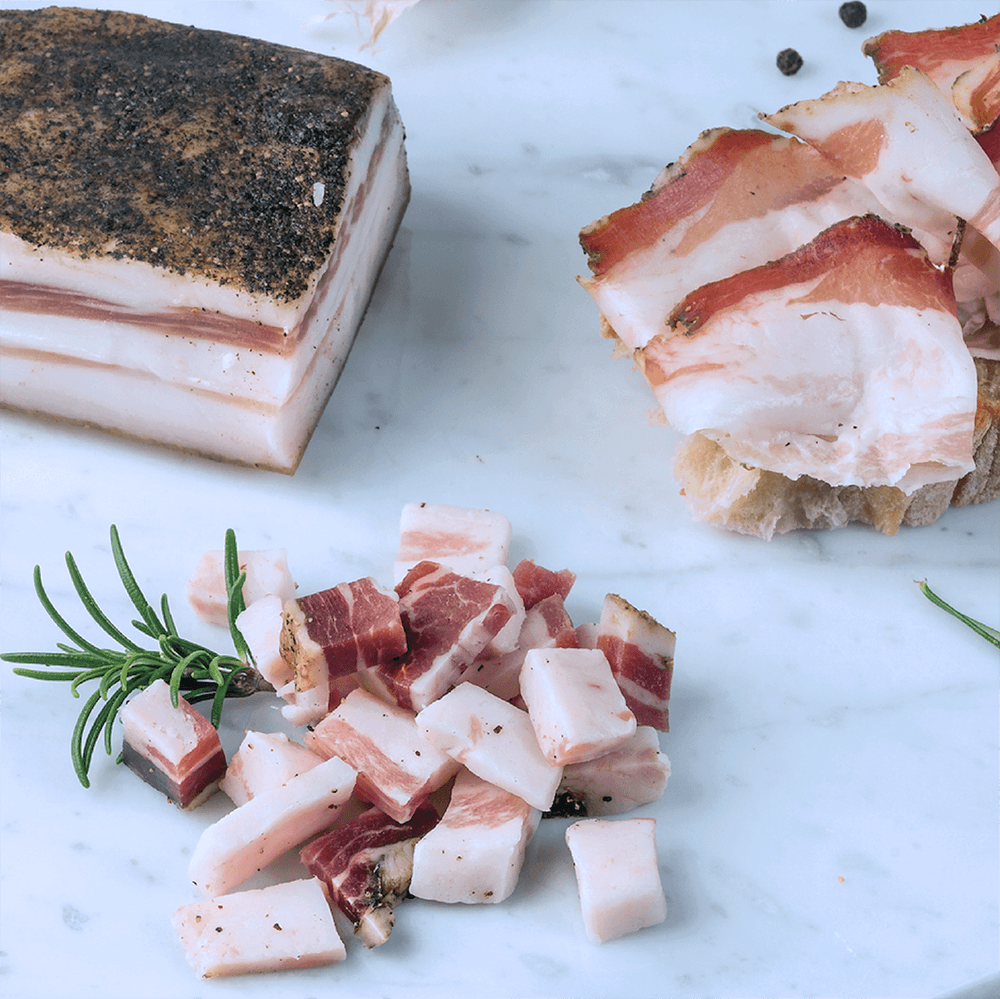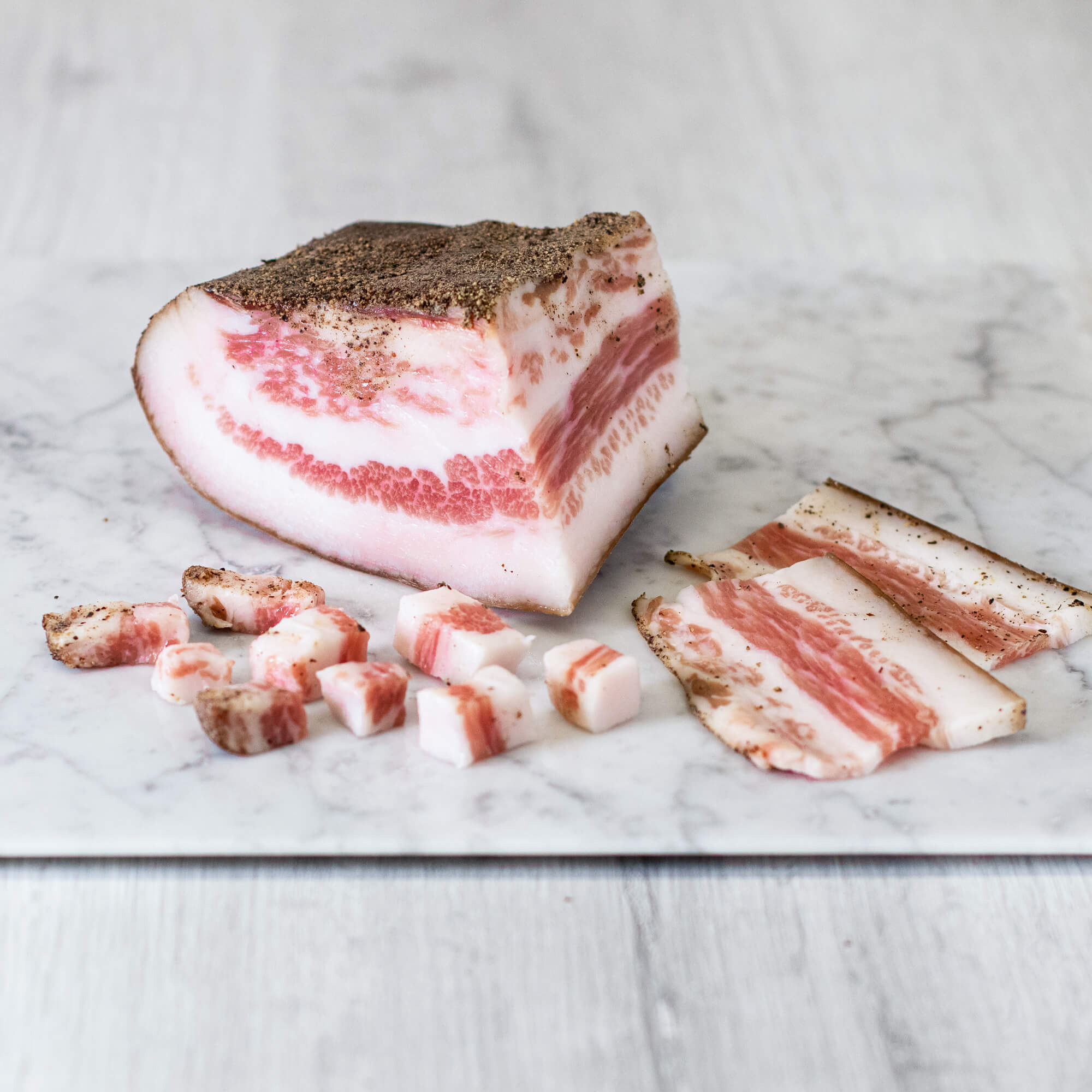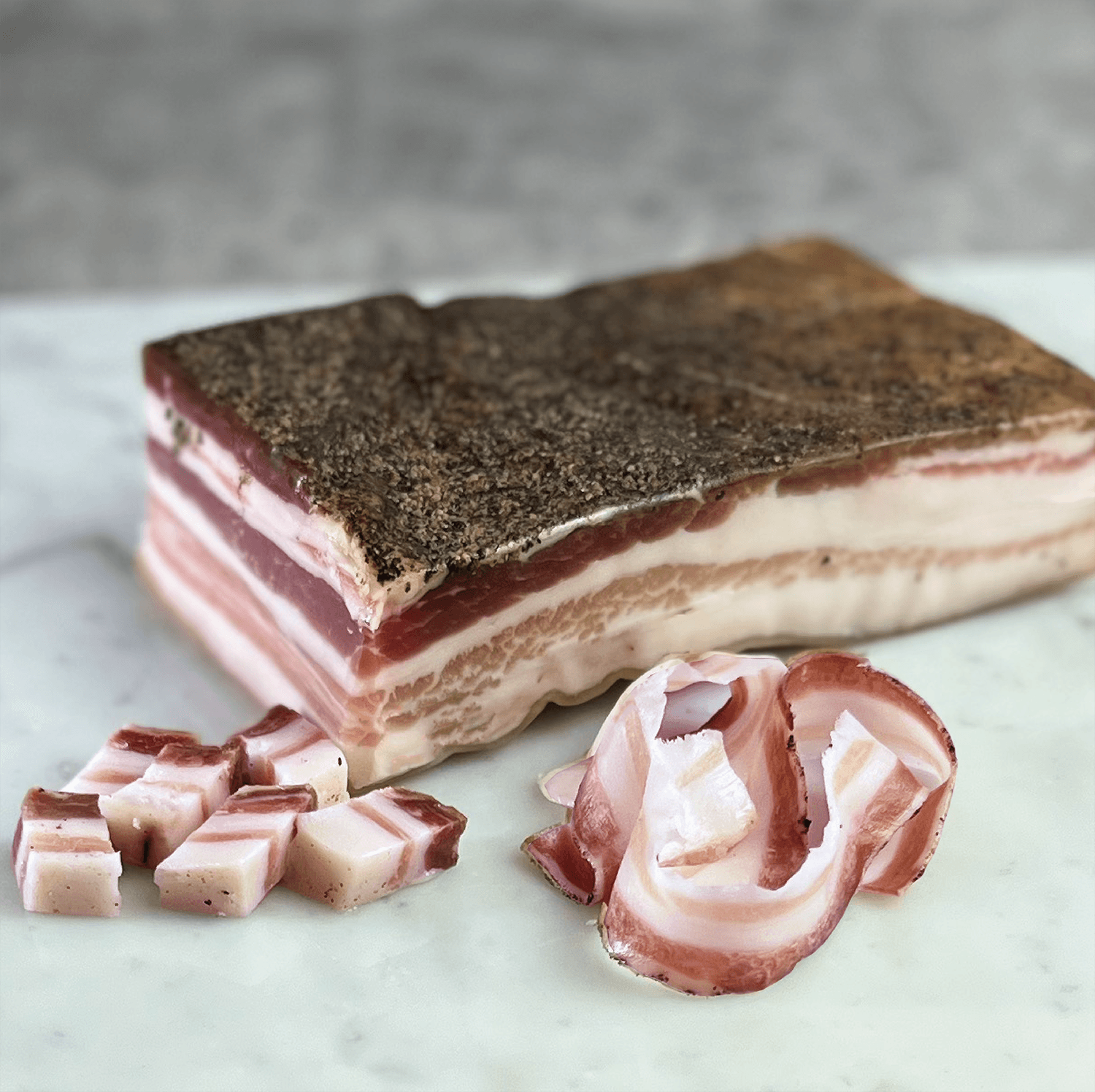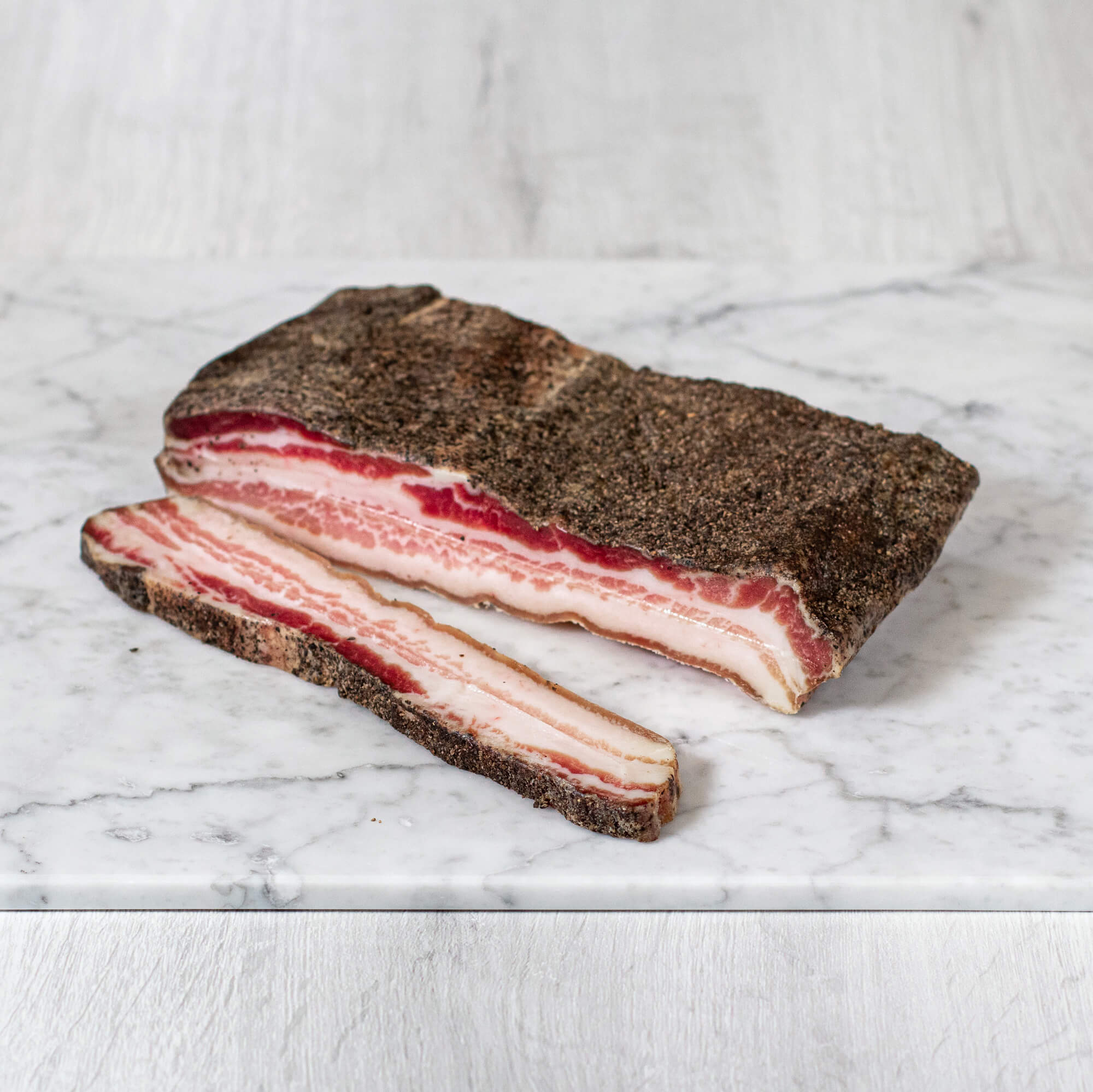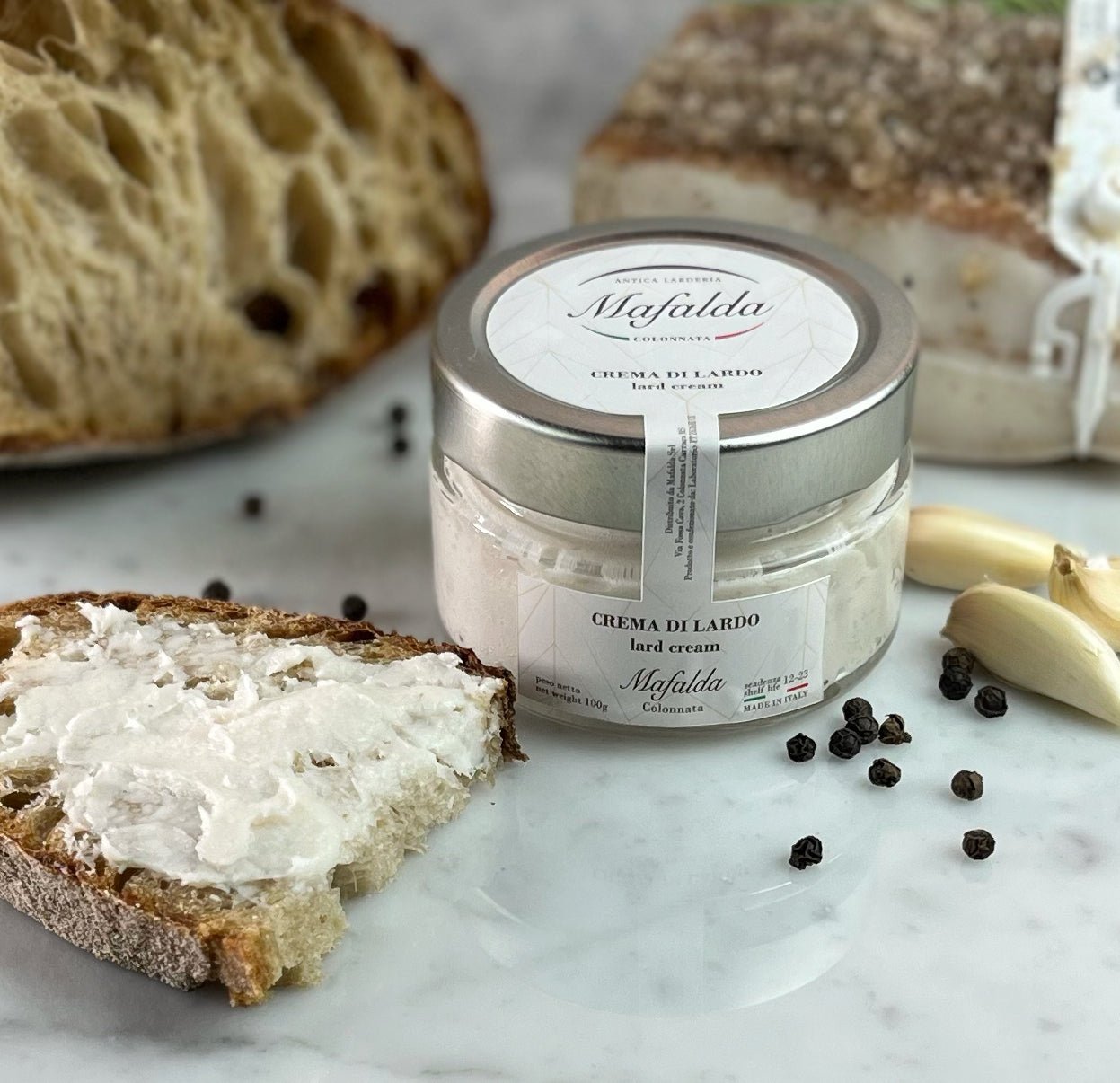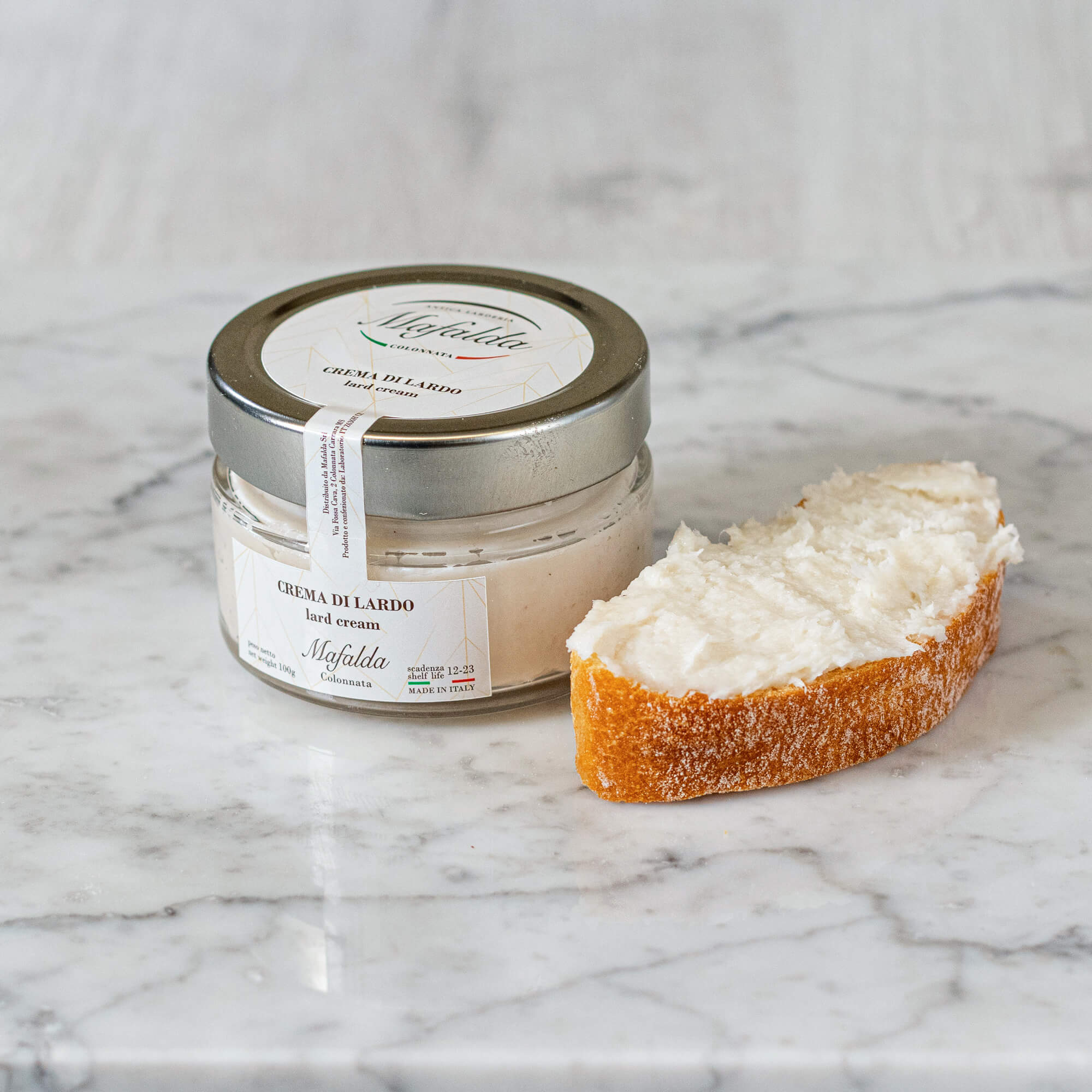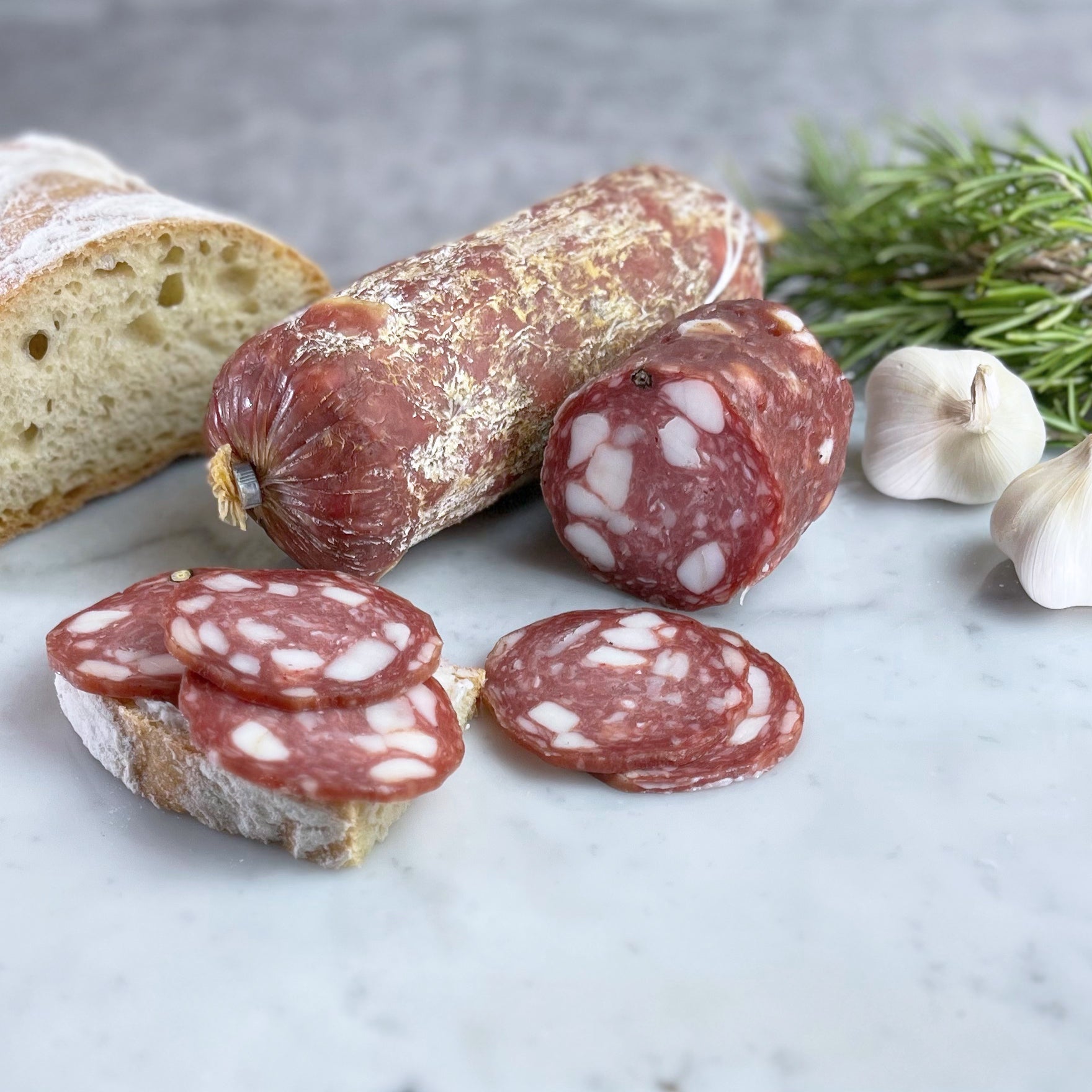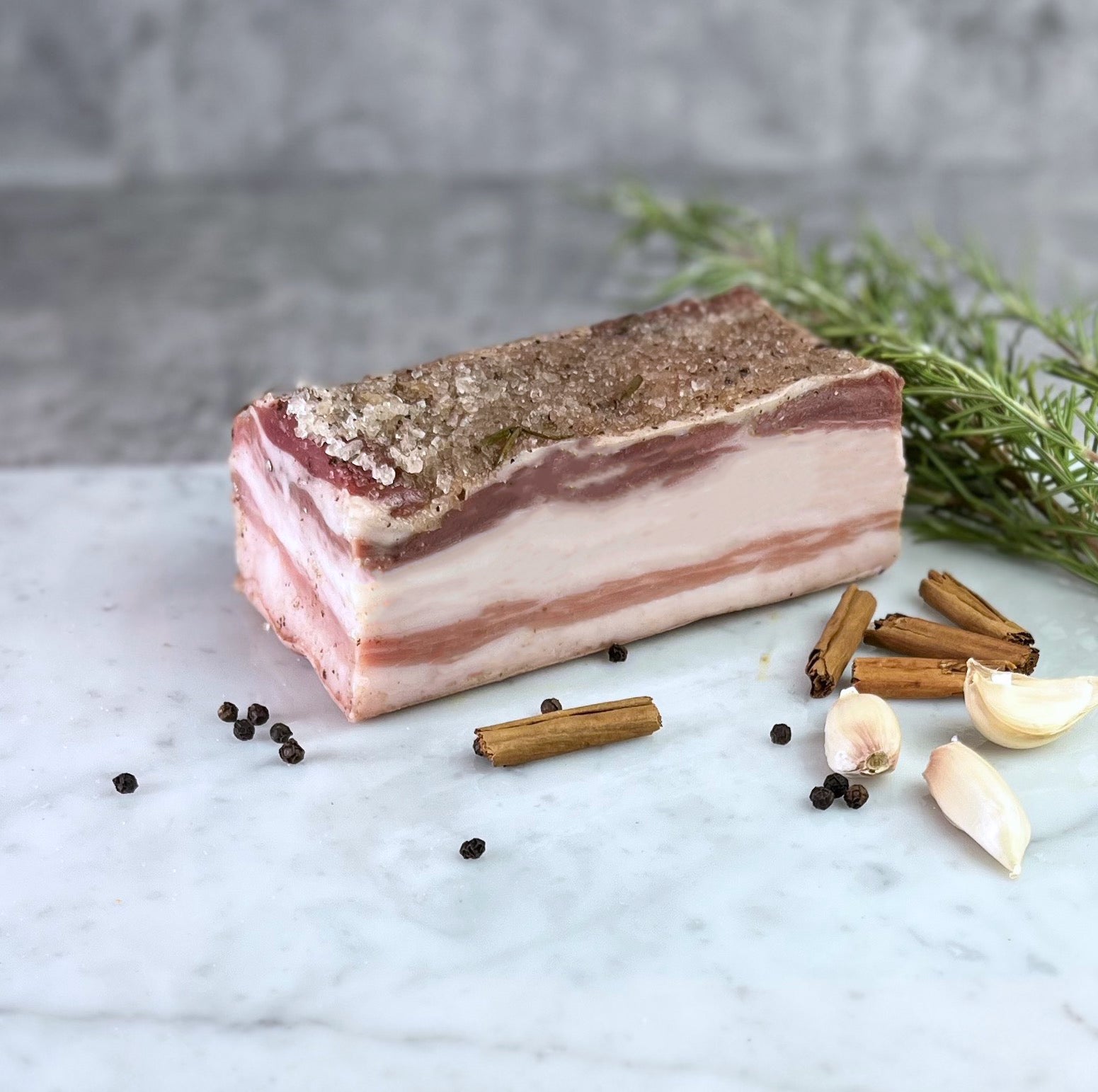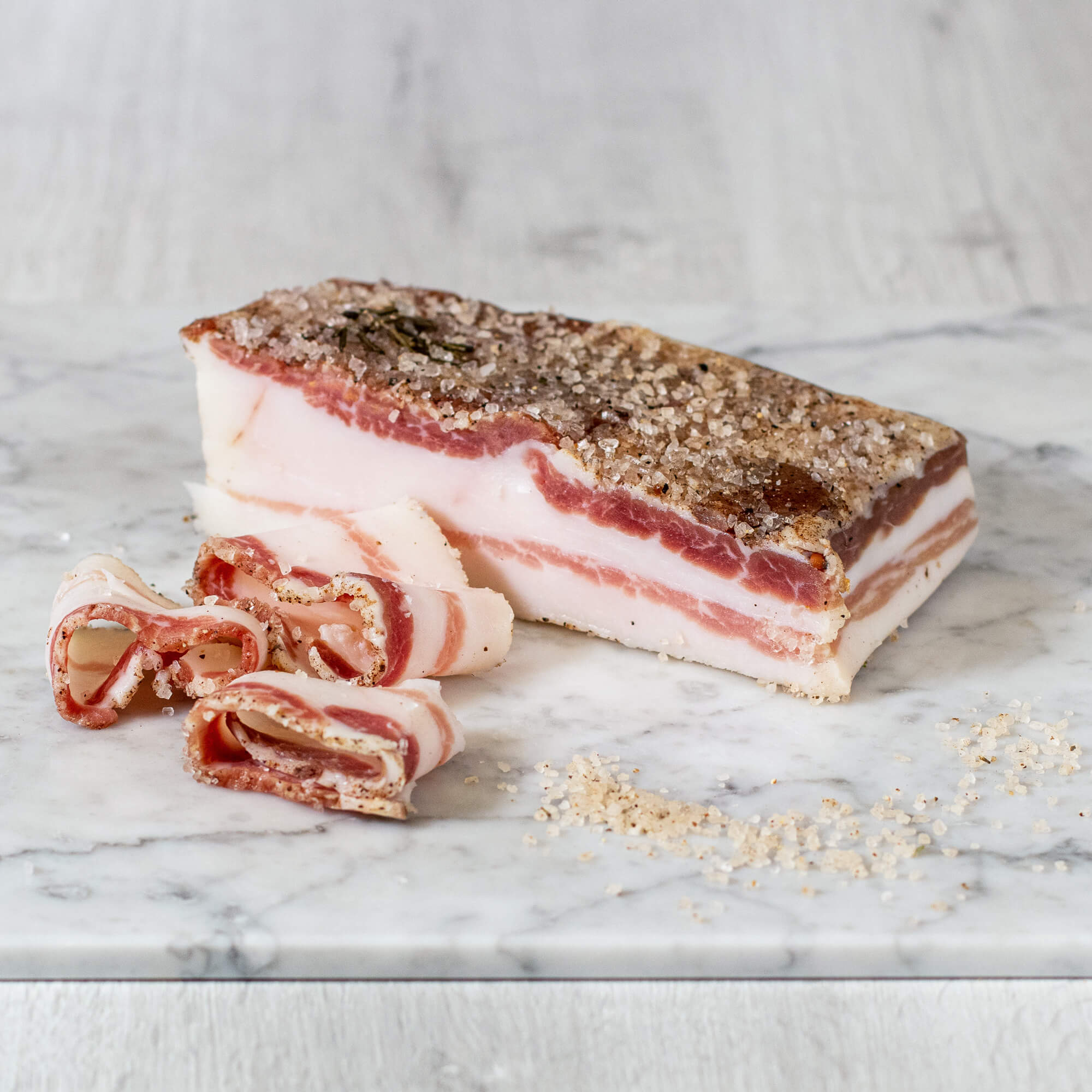Il Lardo di Colonnata IGP Mafalda
Il Lardo di Colonnata IGP è un simbolo di eccellenza gastronomica italiana. Certificato IGP e conforme agli standard CEE, si distingue per il suo aspetto bianco, talvolta con venature rosa intenso, che ne esaltano sia la bellezza visiva che il sapore.
La parte superiore del lardo è ricoperta da uno strato di sale marino grigio-nero, arricchito con spezie aromatiche. Il pezzo ha uno spessore che varia da 4 a 8 cm e un peso tra 0,5 e 1,5 kg, garantendo un gusto insuperabile grazie al microclima unico del borgo di Colonnata. Situato in una nicchia naturale tra le Alpi Apuane, il paese beneficia di correnti d'aria pura e condizioni perfette per la produzione di questo pregiato salume.
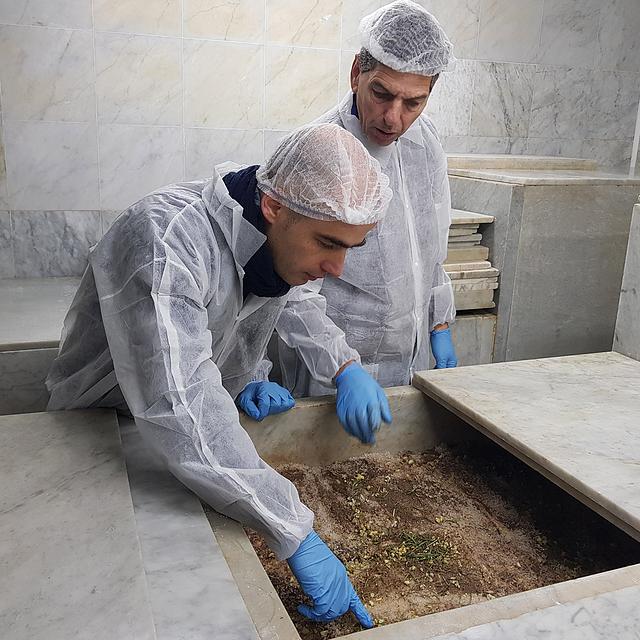
Un procedimento antichissimo
Il procedimento di preparazione del Lardo di Colonnata è un’arte tramandata da generazioni nella nostra famiglia. La stagionatura avviene nelle celebri "conche" di marmo, blocchi scavati di marmo bianco di Carrara. Queste conche, rivestite di sale e spezie, favoriscono la creazione di una salamoia naturale che conserva il lardo e ne esalta il gusto nel tempo. Si narra che la straordinaria forza e salute dei cavatori di marmo fossero dovute proprio al consumo quotidiano di questo alimento nutriente e saporito.
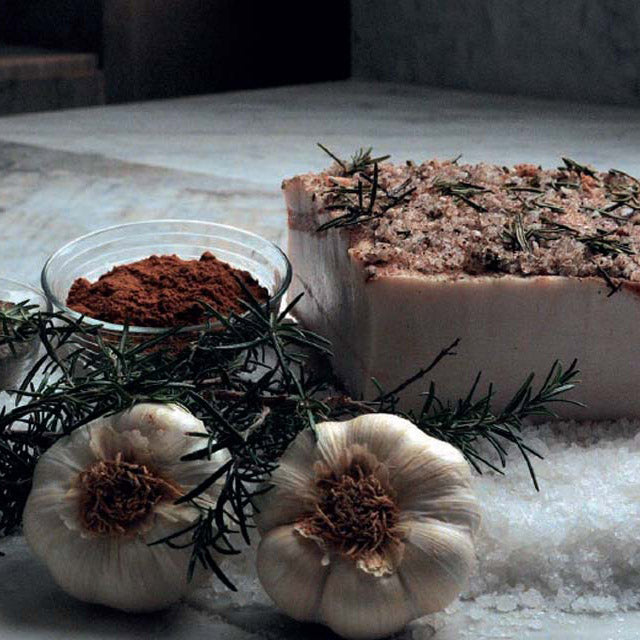
La stagionatura, chiave del gusto
La stagionatura del Lardo di Colonnata IGP dura dai 6 ai 10 mesi. Durante questo periodo, il lardo assorbe gli aromi delle spezie e beneficia delle condizioni naturali offerte dall'umidità e dalla porosità del marmo. Questo metodo tradizionale elimina la necessità di conservanti chimici, mantenendo il prodotto completamente naturale e autentico. Studi chimici e batteriologici hanno dimostrato l’efficacia di questa tecnica, che garantisce una qualità superiore ed un sapore unico.
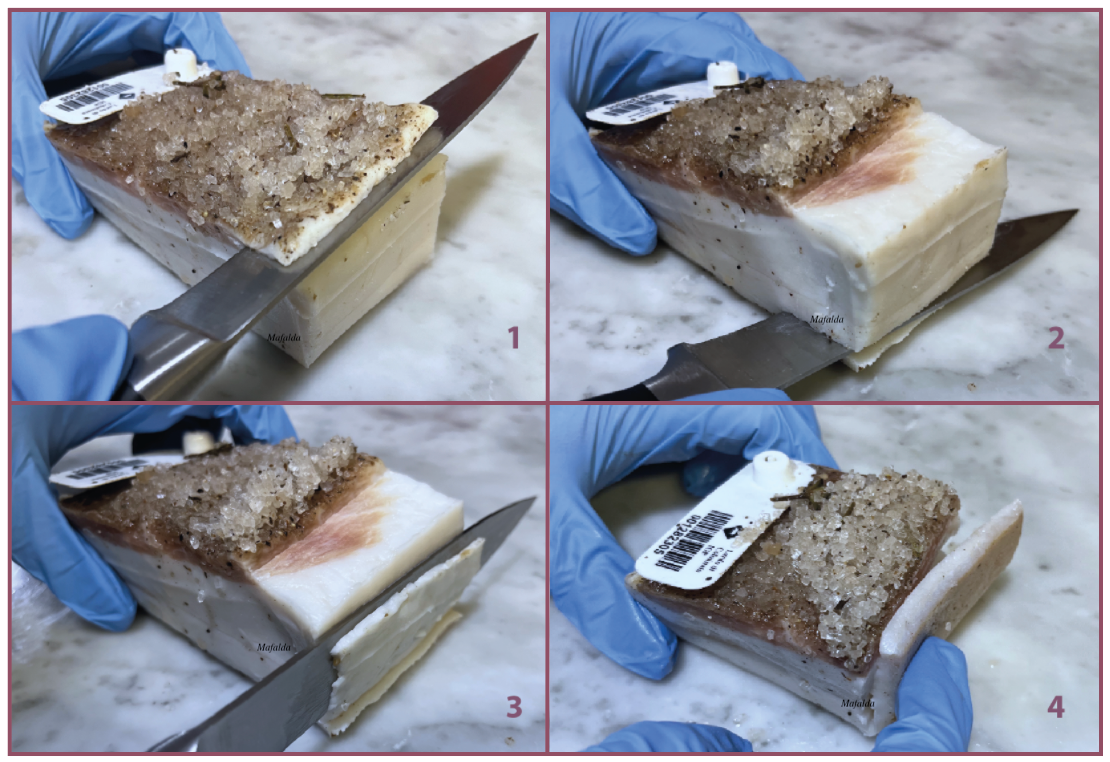
Come gustare il nostro Lardo
Con un coltello ben affilato tagliare ed eliminare la parte superiore ed incidere la “cotenna” inferiore, quanto basta per fare le fettine desiderate. Pulire dagli eventuali residui di sale. Tagliare il lardo a fettine sottili e distribuirle su piccole fette di pane meglio se scaldato leggermente od anche appena abbrustolito; comunque va bene anche pane fresco. Consigliamo l’aggiunta di una fettina di pomodoro senza condimento. I crostini al forno sono squisiti.
Conservazione Perfetta
Per mantenere il Lardo di Colonnata al massimo della sua freschezza, è essenziale seguire alcune semplici indicazioni:
- Ripiega la cotenna avanzata sul corpo del lardo e avvolgilo in un canovaccio leggermente umido.
- Conserva il lardo in una cantina fresca o, se non disponibile, nel reparto verdura del frigorifero.
Questo metodo permette di preservare le sue caratteristiche organolettiche per lungo tempo.
